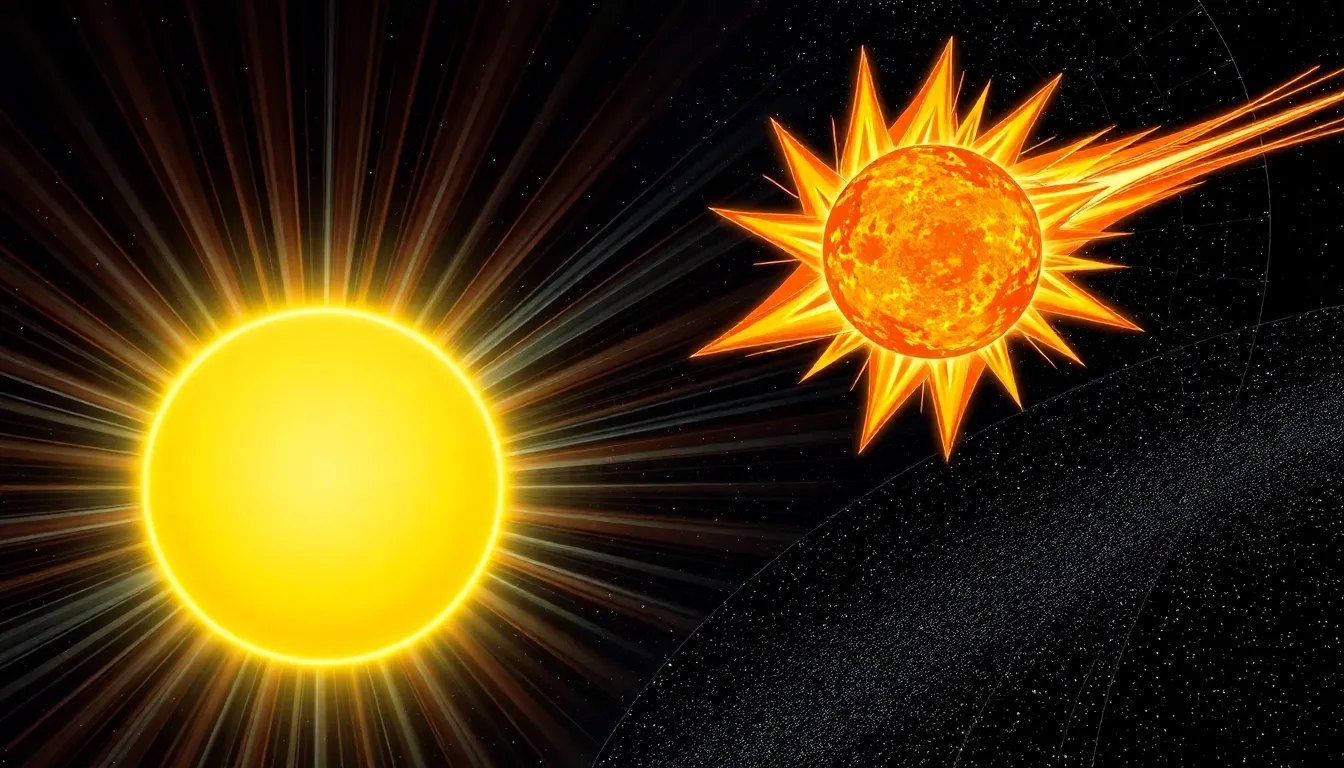Table of Contents
ToggleEver wondered where all that cosmic energy comes from? Spoiler alert: it’s not from your neighbor’s backyard barbecue. Cosmic energy sources are the universe’s secret powerhouses, fueling everything from stars to the mysterious dark matter lurking in the cosmos. It’s like the universe’s version of a never-ending battery, and it’s high time to explore these celestial wonders.
From the dazzling dance of supernovae to the quiet hum of cosmic microwave background radiation, these energy sources are the unsung heroes of the universe. They not only illuminate the night sky but also hold the key to understanding our existence. So buckle up and prepare for a cosmic journey that’s as enlightening as it is entertaining. Who knew the universe had such a sense of humor?
Overview of Cosmic Energy Sources
Cosmic energy sources serve as fundamental powerhouses in the universe. They generate energy through intense processes that create light and heat. Stars, for instance, produce energy via nuclear fusion, which transforms hydrogen into helium, releasing vast amounts of energy in the process. This energy shines brightly, illuminating the cosmos.
Supernovae represent another significant cosmic energy source. These cataclysmic explosions occur at the end of a star’s life, releasing enormous energy and dispersing heavy elements throughout space. The remnants of supernovae contribute to the formation of new celestial bodies.
Cosmic microwave background radiation, a remnant of the Big Bang, also plays a crucial role in our understanding of the universe. It provides a snapshot of the early universe, allowing astronomers to study its evolution over billions of years.
Dark matter, while not directly observable, contributes to cosmic energy dynamics through its gravitational effects. Researchers estimate that dark matter makes up about 27% of the universe, influencing the movement of galaxies and galaxy clusters.
Winds from massive stars add to the complexity of cosmic energy sources. These stellar winds carry charged particles into space, impacting surrounding interstellar matter.
Each of these energy sources helps paint a detailed picture of the universe’s life cycle. They not only fuel cosmic phenomena but also enhance comprehension of the universe’s mysteries, leading to new theories and discoveries.
Types of Cosmic Energy Sources

Cosmic energy sources describe various natural phenomena that generate energy throughout the universe. Each source plays a unique role in shaping cosmic dynamics.
Solar Energy
Solar energy stems from nuclear fusion within the Sun’s core, where hydrogen atoms convert into helium. This reaction produces immense heat and light, which powers life on Earth. Approximately 173,000 terawatts (TW) of solar energy reach Earth every day, enough to meet global energy needs multiple times over. Solar energy is not just vital for terrestrial life; it also drives atmospheric processes and influences weather patterns. Its consistent output establishes solar energy as a cornerstone in the study of cosmic energy sources.
Stellar Energy
Stellar energy connects to the lifecycle of stars, originating from nuclear fusion processes at their cores. This energy drives various processes, including radiating light and producing heavy elements through stellar nucleosynthesis. A diverse range of stars, from red dwarfs to massive giants, emits energy differently throughout their lives. As stars evolve, they transition into supernovae, releasing tremendous energy and dispersing heavy elements into space. These elements seed new stars and planetary systems, illustrating stellar energy’s crucial role in the cosmos.
Cosmic Microwave Background Radiation
Cosmic microwave background radiation (CMB) represents the afterglow of the Big Bang, permeating the entire universe. Detected as faint microwave signals, CMB provides essential data about the universe’s early state. The temperature of CMB measures around 2.7 Kelvin, showcasing its connection to the universe’s cooling phase. This relic radiation supports the Big Bang theory and aids astronomers in understanding cosmic evolution. CMB also serves as a background reference for studying how galaxies formed and evolved over billions of years.
Potential Applications of Cosmic Energy
Various applications utilize cosmic energy, influencing technology and scientific exploration. The potential extends beyond current applications, showcasing innovative uses.
Renewable Energy Solutions
Solar energy represents a prime example of cosmic energy harnessed for renewable solutions. This energy source supports solar panels that convert sunlight into electricity, providing clean alternatives for residential and commercial use. Geothermal energy taps into cosmic sources, utilizing heat from the Earth’s core to generate electricity. Wind energy, another renewable solution, captures atmospheric movements influenced by solar heating. Biomass energy, stemming from organic materials, benefits from solar power for growth, showcasing the interconnectedness of cosmic energy in sustainable practices.
Space Exploration
Space exploration heavily relies on cosmic energy for propulsion and power systems. Solar sails harness sunlight to propel spacecraft, allowing for efficient movement through the solar system. Nuclear thermal propulsion systems, powered by nuclear reactions, offer increased efficiency for deep-space travel. Additionally, in-situ resource utilization encourages astronauts to recycle materials using cosmic energy sources, reducing dependency on Earth supplies. Scientific instruments that rely on cosmic radiation provide data essential for comprehending celestial phenomena and ensuring successful missions beyond Earth’s atmosphere.
Challenges and Limitations
Understanding cosmic energy sources reveals several challenges and limitations. One major limitation stems from the difficulty in directly observing dark matter. While it comprises about 27% of the universe, its effects remain detectable only through gravitational influence. This indirect measurement complicates efforts to fully grasp its role in cosmic energy dynamics.
Another significant challenge involves harnessing solar energy. Solar panels convert sunlight into electricity; however, their efficiency varies based on factors like location and weather conditions. These panels typically achieve 15-20% efficiency, meaning a substantial portion of sunlight remains unutilized. Energy storage options are also limited, which affects energy availability during cloudy periods or at night.
Stellar winds introduce additional complexities. Charged particles emitted by massive stars can interfere with spacecraft systems, damaging electronic components. Designers must consider this when developing technology for deep-space missions. Additionally, understanding radiation from cosmic microwave background presents challenges. Data collection requires precise instruments and conditions, making analysis resource-intensive.
Realizing the full potential of cosmic energy sources relies on ongoing research and technological advancements. Innovations in energy storage and grid integration remain necessary for implementing renewable energy solutions effectively. Collaborations among scientists, engineers, and policymakers can help overcome these obstacles and enhance our understanding of cosmic phenomena. Addressing these limitations fosters progress in harnessing cosmic energy for future generations.
Exploring cosmic energy sources reveals the intricate connections that power the universe. From the life-giving energy of the Sun to the explosive phenomena of supernovae, these sources play a crucial role in shaping celestial bodies and influencing cosmic dynamics. The insights gained from cosmic microwave background radiation deepen our understanding of the universe’s origins and evolution.
As technology advances, harnessing these energy sources presents both opportunities and challenges. Continued research and collaboration will be essential in unlocking the potential of cosmic energy for sustainable solutions and innovative space exploration. The journey into the mysteries of cosmic energy is just beginning, promising exciting discoveries that could redefine humanity’s relationship with the universe.





